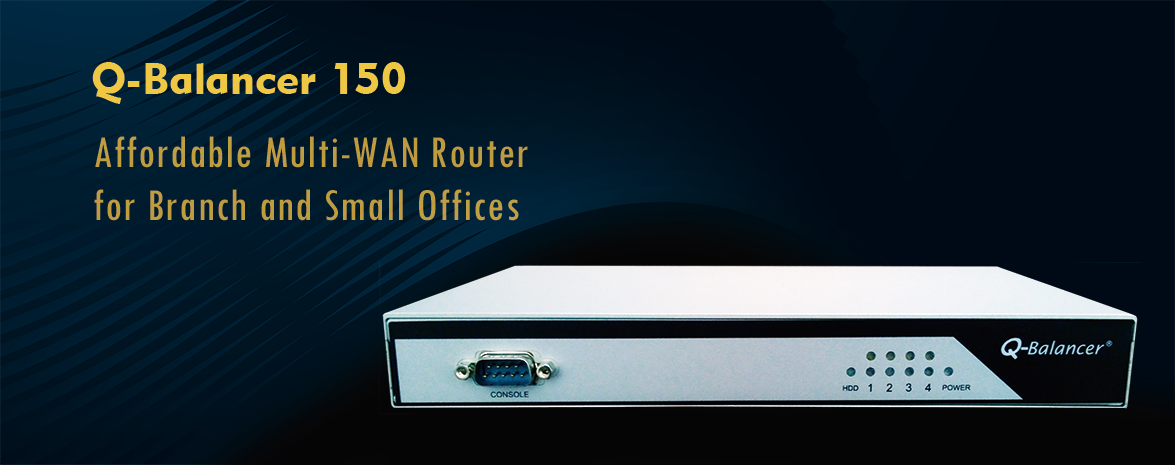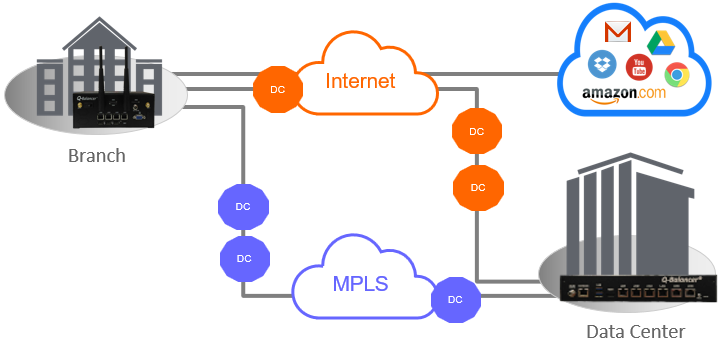Network congestion still occurs today although internet access is cheaper than ever. Most business don't even look at the possible bandwidth requirement as they think that they have already have done enough investment in IT infrastructure. The issue of bandwidth inadequacy has been rarely seen or discussed in enterprise IT department. However, a lack of bandwidth still cause troubles to IT teams, such as slow internet access and intermittent calls or remote desktop sessions.
Single-Site Network
Solution: Session-Based Load Balancing
> Deploying Q-Balancer device.
> Adding redundant connections.
> Monitoring the changing internet conditions on all WAN links.
> Utilizing the bandwidth of all connections.
> Providing business-oriented WAN scalability.
Session-Based Load Balancing
Site-to-Site Network
Solution: Packet-Based Load Balancing
The packet-based load balancing technology of Q-Balancer chops an individual session into packets and sends each of the packets down different connections. With the technology of packet-based load balancing, Q-Balancer combines bandwidth for site-to-site circuits and makes the bonded circuit work like a virtual leased line, which provides theoretically equal bandwidth to the sum of the separate connections.
This approach aggregates bandwidth of all connections at the branch network, and so as to provide greater bandwidth capacity. Sufficient bandwidth would always be provided to enterprise networks as low-cost broadband connections can be flexibly and immediately added as soon as needed.
Packet-Based Load Balancing
MPLS Network
Solution: Software-defined Wide Area Network (SD-WAN)
A SD-WAN is a virtual WAN architecture that allows enterprises to leverage any combination of WAN transports to increase bandwidth for legacy network- which is mostly based on MPLS. The WAN transports such as DSL, 4G LTE, cable, fiber, Metro Ethernet, etc. can be applied to virtually build a faster network connection. SD-WAN is more open, reliable, resilient, agile and cost-effective to enterprise networks, and can be applied to augment or replace expensive MPLS connections for enterprises.
SD-WAN



























































